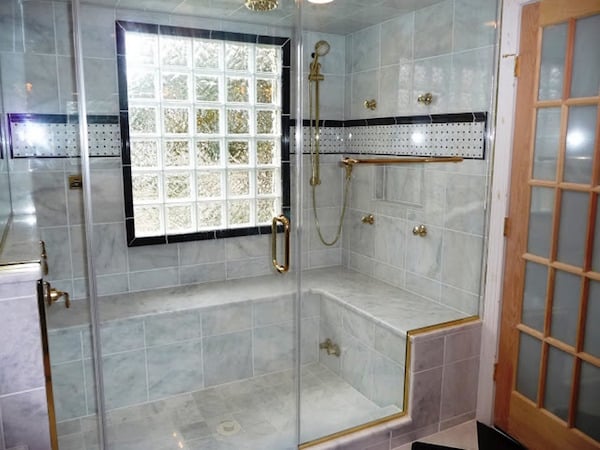
The most common shower door style is the bypass door, which has two doors that slide in a frame mounted to the tub’s end walls. This is the most economical design and by far the most popular. It is a design that is also responsible for the greatest amount of shower door problems. If you’re not set on a bypass door for budgetary or design reasons, there are an endless array of other shower door designs out there to choose from that will probably cause you less trouble over time.
Shower Door Problems Are Common with Bypass Shower Doors
A bypass door, or a sliding shower door that runs on a track, provides the perfect environment for water to gather and cause problems. The metal track where the rollers sit can rust, gather debris, develop mold and mildew problems, and generally deteriorate from water damage. Besides the track itself failing, the retention of water causes a number of other shower door problems as well. Rollers can gum up and stick, and the metal components in your rollers can rust and fail. Basically, the general rule that metal and water don’t mix is a good one to live by. Spending money on shower doors that mix the two together is going to cause you problems in the long run every time.
Other Shower Designs
While standard bypass shower doors are the norm, there are a number of other options out there to choose from, depending on your design and budget considerations. The simplest answer is to invest in a hinged shower door. These doors don’t rely on tracks or rollers and thus don’t experience the number of problems that a sliding shower door does. If you’re thinking outside of the box and have the means, you can eliminate a shower door altogether. Wraparound shower designs and walls create showers that don’t need doors at all. Plus since they’re usually made of high-quality materials, such as stone or block glass, they look a lot better than your standard, framed glass shower door in the first place.
Ready to start your Shower Door Repair?
Find ProsShower Glass Design
While stone and block glass are dependable and attractive building materials, they’re simply not in the running when it comes to fitting the strapped budgets of many homeowners. If shower glass is the best option for you, you should consider your options carefully before your glass shower door installation.
- Obscured or Frosted Glass—This glass is opaque in nature, offering both privacy and a feeling of space in a bathroom setting.
- Etched Glass—With etched glass you can add design and elegance to both plain and frosted shower glass walls and coverings.
- Glass Blocks—As mentioned, glass blocks provide eye-catching, decorative highlights, to any shower set up. Your design options greatly increase when using this material, though they will also come at a higher price than with standard glass.
Talk to a Bathroom Contractor
If you’re dealing with shower door problems and are ready for a change, talk to a bathroom contractor about shower options that will fit your bathroom and home design. Whether you’re looking for an economical solution or are ready to take on a more substantial bathroom remodel, a bathroom contractor will be able to offer you the advice and quality workmanship you’ve been looking for to solve your shower door problems once and for all.
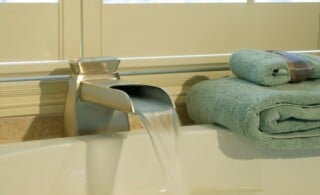 Get Relaxed with Waterfall Faucets
Get Relaxed with Waterfall Faucets 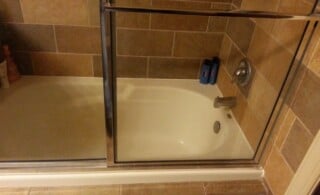 Tub and Stall Shower Installation
Tub and Stall Shower Installation 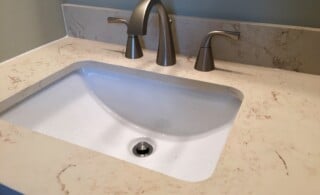 Removing Bathroom Fixtures When Remodeling
Removing Bathroom Fixtures When Remodeling 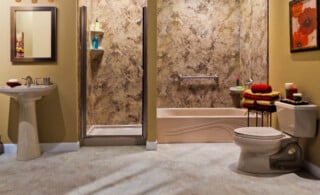 Common Luxury: Acrylic Showers and Bathtubs
Common Luxury: Acrylic Showers and Bathtubs 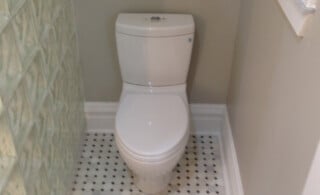 Dual Flush Toilets
Dual Flush Toilets 

I have a seamless shower door. One side is stable & does not move. The door itself is attached by 2 chrome hinges. The top hinge has come loose 3 times & had to be repaired. It had to do with the rubber between the glass & hinge. It’s happening again & the glass door hits & overlaps the stable side. I’m frustrated & need a real fix. Help!!
This is a typical problem with your hinges. The only way to avoid this is to replace the rubber with epoxy.
Shower door adjustments won’t allow door to close properly at one end and at the top of the same end.
Hi Sondra. I have the exact same problem. I fixed it by replacing the gaskets with contact cement. However, now, 2 years later I see the door has rotated/sunk again. It had been good for the 2 years. I don’t know what the solution is. I think the door is too heavy for the designed approach for holding it. If you learn of a solution, please let me know. John
I know these comments are old, but since three people had the same problem I will post for others.
Assuming you are able to safely secure the door so that it doesn’t move when you remove the hinge plates, the are a few possible causes. Use denatured alcohol to clean the gaskets, the glass, and the part of the hinge plate that will touch the gasket. Check the gaskets to make sure that they are the correct thickness for your glass thickness. Many hinges come with two sets of gaskets, one for 3/8 (or 10 mm) and one for 1/2 (or 12 mm). If the installer used the thinner set for 3/8″ thick glass (the most common thickness), then the glass will probably slip in the hinge at some point since the hinge plate can’t be clamped down tight enough. This relates to another possible issue, and that is that the hinge plate screws are bottoming out when you tighten them down. Some hinges have little pillars at the corners of the notch. If your glass has a notch cutout that looks like Mickey Mouse ears, then the pillars would be where the “ears” are. Not all mickey mouse cutouts will have hinges with these pillars, but if you have them you will see a slot at the top for a flat-head screwdriver. Make sure these are tight, otherwise they will prevent the plate from clamping down on the glass completely. Another possible issue is that your hinge plates are just not tightened hard enough. Hinge plates usually come with screws that have either a #3 phillips head, or a hex head. If you have the #3 phillips screws, you must use a #3 and not the more common #2. You absolutely won’t put enough force on the screws if you use a #2 bit. It is too small and will slip in the screw after you might think it is already tight. If the door was installed by a professional, it probably has the hex head since it is the best head for tightening down the plates.
have old shower and chrome frame has rusted at bottom and sides. Is there any way to replace frame of door and keep glass?
My shower doors will not close, Both are hanging on the track but when I try to close them keep hitting at the half way mark ?
Glass shower door changes with seasons. Is OK in winter, but when spring arrives it begins to stick and one end begins to overlap the other glass. I’m sure it has something to do with the house foundation contracting and expanding, since we have tried adjusting the hinges but that does not help in this case. Should we sand the edge of the glass? Any other suggestions?
I am able to procure a glass swinging door and a fixed glass to complete a shower enclosure. The fixed panel is 1 1/2 inches too wide and would need to extent and be secured into the studded wall. The question is how successful would I be able to seal the inside corner of the glass and tile?
I have a problem with a hinged shower door. The bottom track (about one inch long) has come off so the the door is swinging. could anyone advise how to stick the track back on?